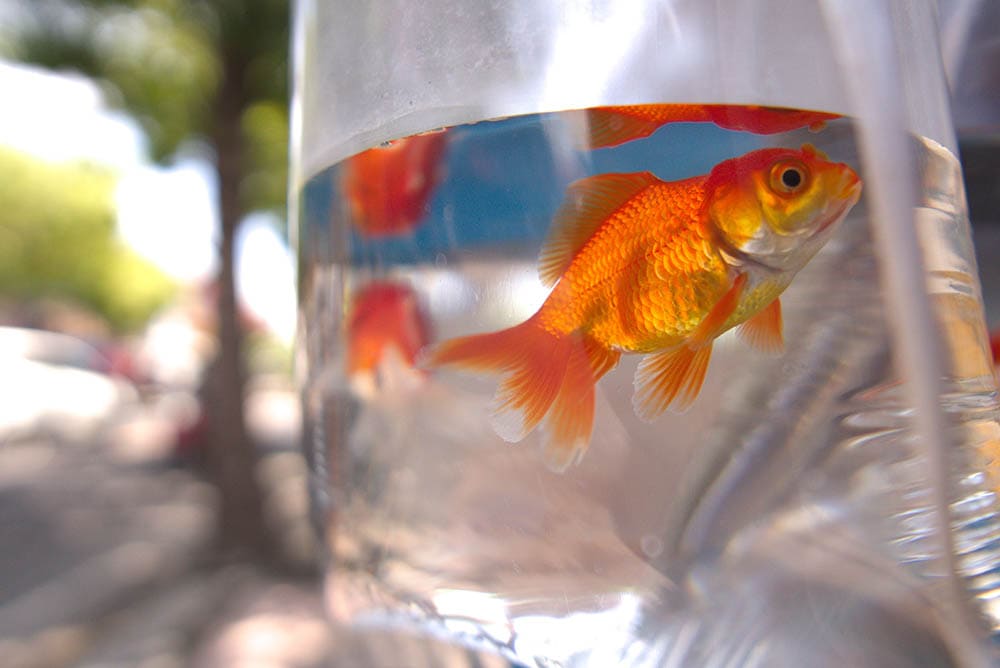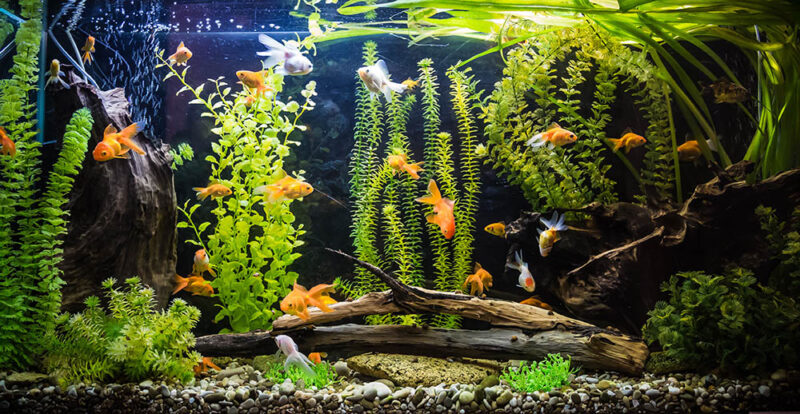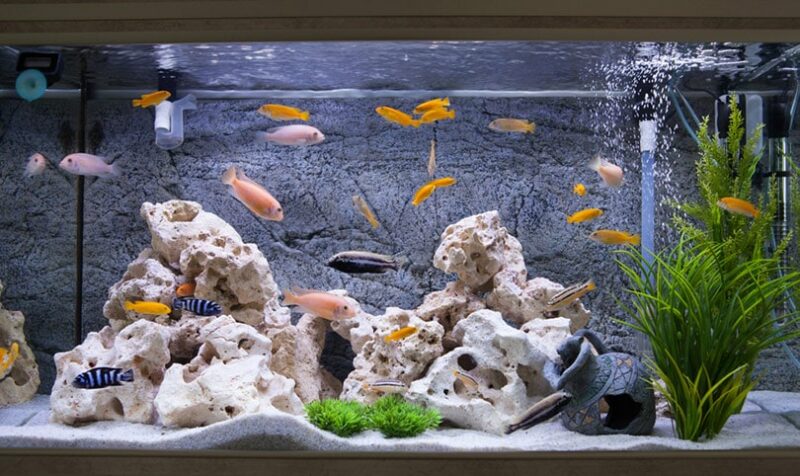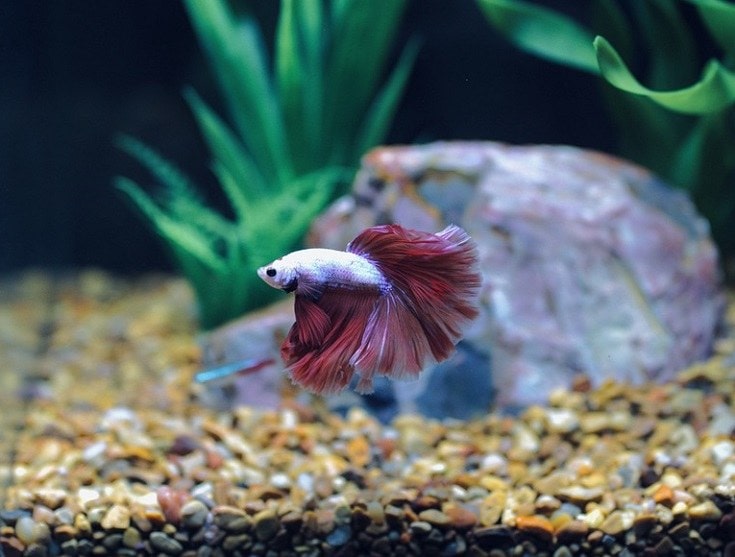
Feeding your fish, the right quality foods is the first step in ensuring that they remain healthy. The food you choose to feed your fish plays a huge role in their longevity, growth, development, and coloration.
With such a diverse amount of fish food on the market, deciding which food is right for your aquarium fish can be tricky. Although many people are used to the ‘old school’ method of fish feeding (throwing some cheap flakes into the tank), you will be surprised at how important your fish’s diet is for them.
There is so much misinformation and confusion over fish nutrition and which brands are ideal or not. We have done tons of research and personally tested and the pros and cons of some well-known fish brands to compile all the main points so that you can get a definitive answer as to which aquarium fish food is right for your species of fish, and why.
How To Read Fish Food Labels
Reading the labels on your fish food can be pretty complicated if you do not know what to look for, which parts of the label are important, and in what order you should read the label. This is the first step to choosing the right food for your fish.
Here is a breakdown of the main labeling system used by various fish food brands:
We will be referring to Blackwater Premium Koi Fish Food with visual references in this section so that you can easily understand how to read a fish food label.
1. The Brand Name
This forms the largest portion of the label, and it is placed on the front in eye-catching texts and color. There is a picture of the type of fish this food can be formulated for, which can give you the first indication of if this food is right for your species of fish. You can also narrow down your options by looking at the main label and determining if it is a fish-related company that created this food, or if it is an off-brand food. You want to avoid these types of fish food because the company does not focus specifically on fish, and so the food quality is automatically lowered.
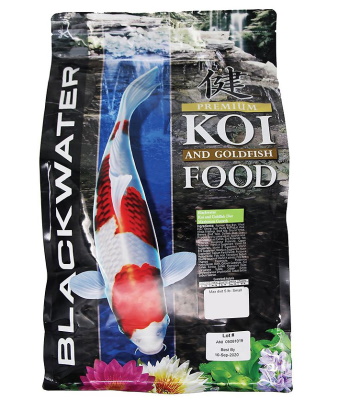
2. Type of Food
Below the main heading, there will be a small yet equally colorful text indicating what type of food is in the product. This can include foods such as flakes, granules, pond sticks, pellets, or gel food.
3. About The Brand
Next, the label will tell you information on the brand itself, what its aim is and what this food can do for your fish.
4. Feeding Guide
The feeding guide will provide you with all the information you need to know about feeding this brand of food to your fish. This can include the size and age reference and the desired amount in grams or ounces will be provided. In some instances, the manufacturer will include how often your fish should be fed this food and give an approximate daily limit.
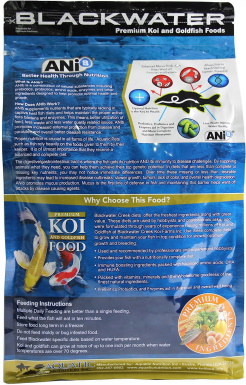
Many goldfish die as a result of improper feeding, diet, and/or portion sizes – which can be easily prevented by proper education.
That's why we recommend the best-selling book, The Truth About Goldfish, which covers everything about goldfish nutrition, tank maintenance, illnesses & more! Check it out on Amazon today.
5. Manufacturing and Expiration Date
A small section of the entire label will have the manufacturer’s address, a phone number if you have any queries about the food and a manufacturing date along with an expiration date.
It is important to purchase food that has an expiration date (also known as the expiration date) at least 6 to 12 months before expiry. Fish should be fed fresh food and expired food loses nutrients over time that will make the food nutritionally poor for your fish.
6. Ingredients
Let’s take a closer look at the ingredients in this food:
Premium Menhaden Fish Meal, Rice Bran, Wheat Flour, Shrimp Meal, Poultry By-Products Meal, Wheat Middlings, Ground Wheat, Propionic Acid (a preservative), Ascorbic Acid, Iron Oxide, Vitamin A Supplement, Vitamin D3 Supplement, Vitamin E Supplement, Vitamin B12 Supplement, Riboflavin Supplement
The ingredients listed first on the ingredient label show what most of the product consists of. The inclusion of each ingredient goes from ascending to descending order. In this case, fish meal makes up the largest portion of the food. This can help you determine if the food is high in fillers (which is virtually insignificant in a fish’s diet). Fish meal, rice bran, and wheat flour are high on the ingredients list, so this food is high in fillers.
Vitamins and minerals will be in the middle section of the ingredients list, and you can skim down the list to determine if these additives are necessary for your fish species.
In addition, you can also skim over the list and see if you can spot harmful ingredients that you should avoid feeding to your fish.
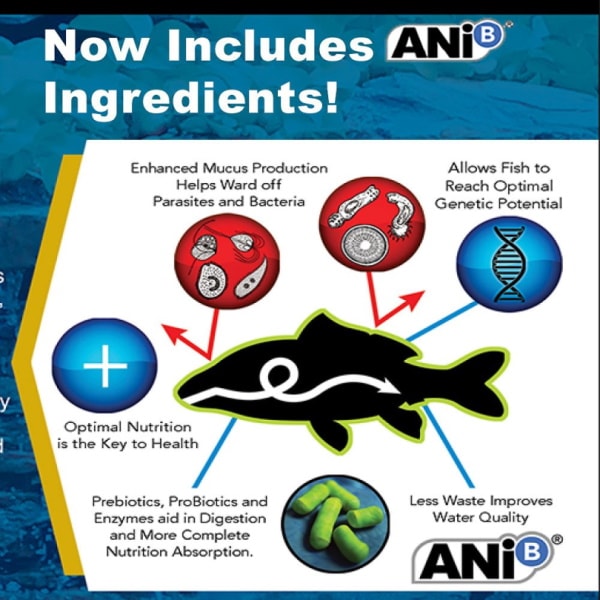
7. Guaranteed Analysis
| Guaranteed Analysis | |
| Crude Protein | 38% |
| Crude Fat | 8% |
| Crude Fiber | 4% |
| Moisture | 10% Max |
The guaranteed analysis will give a general overview of the amount of protein, fiber, fat, and moisture is in the food. This should be closely analyzed, as it will determine the amount of nutrition your fish is being fed. Some species of fish require high levels of protein, whereas some should have low protein but high fiber content.
Fish Nutritional Information
Every aquarium fish should be fed a species-appropriate diet that meets or exceeds its nutritional requirements. You want to avoid foods that contain harmful ingredients, fillers, and excessive artificial colorants and preservatives. While it may be difficult to find fish food that is on the natural side, it is recommended to ensure that the ingredients are easy to read and contain low amounts of artificial additives.
The key minerals that all aquarium fish require are calcium and phosphorus. They also need trace amounts of iodine, magnesium, sodium, chloride, copper, and zinc. With this being said, there is no one ‘perfect’ fish food out there. Each food may lack certain nutrients that can be found in another brand of fish food or vice versa. It may then be better to provide aquarium fish with up to two or three different brands of food so that you can ensure your fish is getting an optimal amount of minerals, vitamins, protein, fat, and fiber.
Fish get most of their energy from fats, which means that the crude protein content should be considerably high if you have active fish. Amino acids are also important for fish and the wrong types of amino acids can lead to poor water quality in your aquarium.

These are considered the building blocks for fish in terms of standard dietary requirements:
Amino Acids:
Suitable fish food brands will generally blend ingredients to limit the number of proteins for optimal amino acid intake. Some fish food brands have way too much unnecessary protein in their formulas which can contribute to kidney diseases in old or weakened fish over a prolonged period as the protein overexerts their kidneys. This is more of a concern with herbivorous fish than it is with omnivorous or carnivorous fish, and they may do better with plant-based proteins.
Amino acids are essential acids that should be in your fish’s food. DL-methionine is one of the eight essential amino acids and can be found in ingredients such as fish meal, wheat flour, and fish eggs and is typically included in both high and low-quality fish foods. Although wheat flour does contain traces of amino acids, the types of grains we see in fish foods are not always up to standard. Grains and plant sources (excluding spirulina) do not contain complete amino acids and lack essential amino acids like lysine or methionine.
Protein and amino acids are necessary because they help your fish’s muscle and tissue repair, and it can be beneficial to increase your fish’s amino acid intake while they are healing from an external injury. Some fish foods will go as far as claiming the formula of the food has been specifically prepared to include as many amino acids as possible, so that might be something to look out for if you are interested in the benefits of amino acids for your fish.
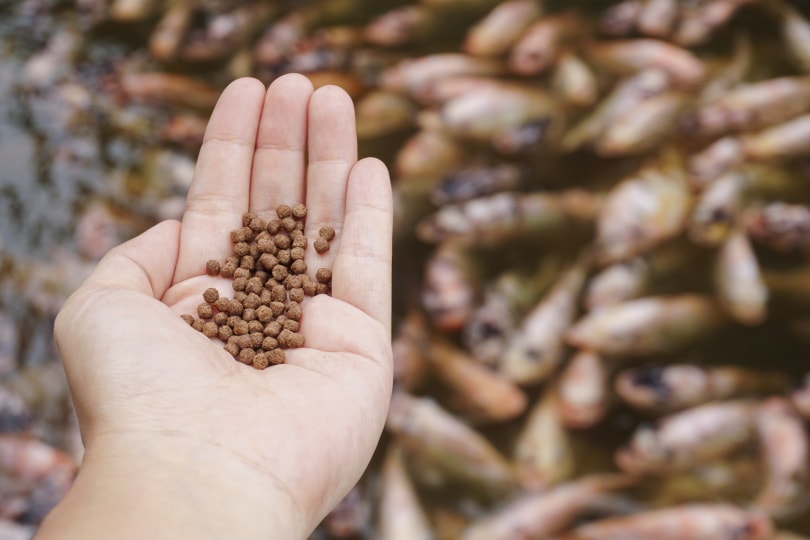
Fats (Lipids):
Fats are primarily used as a source of energy for fish. This helps keep them active and physically healthy while they swim about the tank and display their natural behaviors. Lipid fats are also necessary for vitamin absorption in fish as Vitamins A, D, E, and K are fat-soluble, which means that they can only be digested and absorbed into the body. Triglyceride lipids can also form a source of concentrated energy in fish, in conjunction with a balance of amino acids and carbohydrates in their diet.
The lipids usually found in some fish food brands are from fish themselves. This makes it important to ensure that the food labels the ingredients appropriately, such as a ‘fish’ meal, rather than just a meal. In this case, whole fish meal would be the most suitable source of lipids for your aquarium fish.
Plant lipids have a higher concentration of omega fatty acids, in comparison to protein sources. Lipids are highly digestible for all species of fish, depending on the number of lipids in the food and the origin.
Carbohydrates
Most carbohydrates found in your average container of fish food come from a plant-based origin. This can be a defining factor when it comes to deciding which aquarium food is right for your fish because some fish are strict carnivores and require small traces of plant matter in their diet or none. Carnivorous fish such as bettas and cichlids, cannot digest plant matter well and may even struggle with digestive issues like bloating and constipation. This is because carnivorous fish struggle to digest amylase (an enzyme that breaks down carbohydrates).
However, omnivorous, and herbivorous fish species (such as goldfish or mollies) can benefit from having a large portion of their diet consisting of plant-based matter.
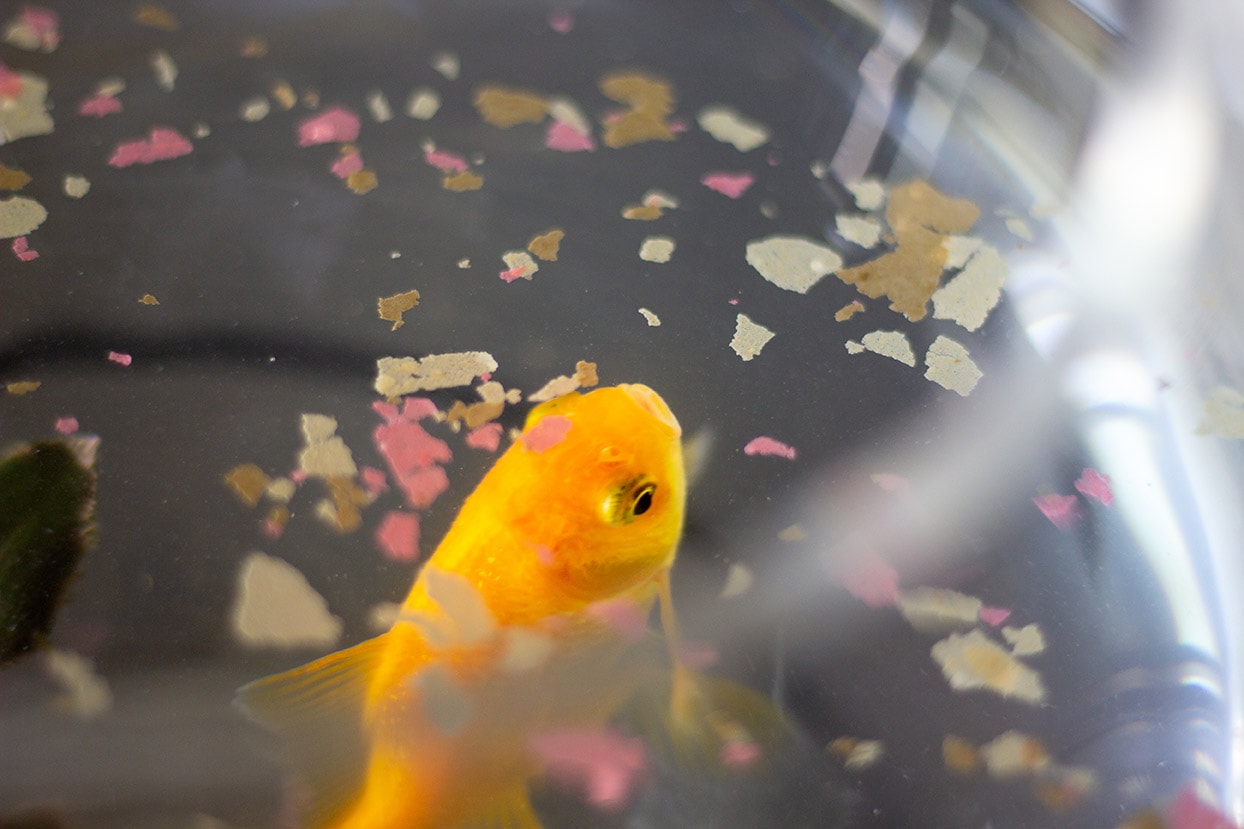
Omega 3 & 6
A common problem we see with a variety of fish foods is that the omega 3 sources are from plants. The thing is, very few plants produce a significant level of omega 3 fats but instead produce more omega 6 fats, which can potentially cause inflammation in your fish over time.
If you want to find fish food with a decent amount of omega 3 and 6 fats, then the source should be from fish meal, rather than plants or algae. Omega 3 fatty acids are most beneficial for aquatic fish, especially when it comes to fighting inflammation and chronic pain as well as proper brain function and development.
The 5 Types Of Fish Food
As the decades pass and more research is being done on what type of nutrition your fish requires to remain healthy and live a fulfilled life, many new fish foods are being produced holding a ‘scientific’ standard to their name. Well, these brands usually keep the promise to their labeling, you cannot choose a fish food based on the labeling tactic, as some scientific foods are not always ideal for fish.
There are five main types of fish food on the market, and each food varies greatly in terms of texture, vitamin, and mineral components, and water fouling properties.
1. Flakes
This is the most popular type of fish food for both tropical and cold-water fish species alike, but it is not all too great. You see, fish flakes are constructed of a very thin, soluble form that easily dissolves in water. The downside to this is that flakes will quickly release their nutrients into the water and start to rapidly dissolve. This means that your fish is not retaining all their nutrients, but rather those valuable nutrients are polluting the water column and causing the water quality to deteriorate with every feeding. Although there are some decent fish flakes out there, the same principle applies even if the label claims it ‘dissolves slowly’.

2. Pellets
The second most popular fish food comes in the form of small or medium-sized pellets. Pellets are highly recommended for a variety of reasons, with the main reason being their ability to retain nutrients once it hits the water. This is important as fish will not be able to eat up every morsel in the tank, so any fish that are last to get to the food will still be able to get their daily nutritional requirements. Pellets also break down much slower than flakes and will only begin to expand after being uneaten in the water for more than an hour.
3. Granules
This type of fish food looks similar to uneven crumbs. Each granule is a different shape and size, but all granule-based fish foods are great for smaller species of fish. Micro granule fish food is better suited for fish fry or small juvenile fish that struggle to eat larger pellets.
4. Sticks
Pond sticks are common for outdoor koi and goldfish keepers. These sticks are often large and can easily be swallowed by large species of fish. The sticks get soft and start to expand when they encounter moisture, which allows the fish to swallow the sticks or break them into pieces.
5. Gel Food (Powder Form)
A new type of fish food comes in a powder form. This type of food requires a lot more preparation and maintenance than other fish foods, but the nutritional quality is outstanding. This food is more popular with goldfish keepers, as it contains the right balance of pants and protein to keep them healthy. All you must do is mix the powder with water and freeze it into cubes. Feeding can be messy, and it will quickly foul the water if you overfeed this type of food to your fish.
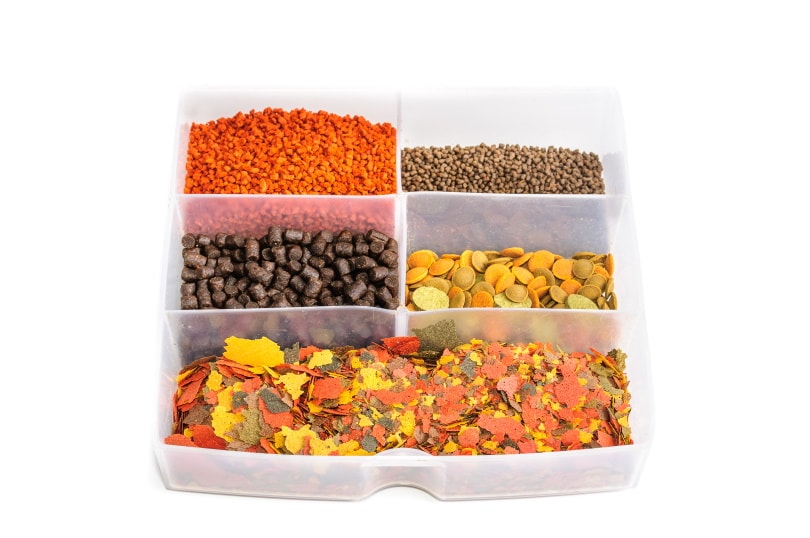
What To AVOID When Choosing Aquarium Fish Foods

Which Aquarium Fish Food Is Right For You?
The food you eventually purchase and feed to your fish should meet their minimum requirement of crude protein, fat, and fiber. There should be a decent number of vitamins and fats, along with a moderate level of fiber. The food should be tailored towards your fish’s species unless it is a supplement-based food like freeze-dried bloodworms.
If your fish’s diet is complete, balanced, and free from harmful ingredients, then your fish will reap the benefits of a healthy diet and it will show in their overall behavior, coloration, weight distribution, and immune function.
Featured Image Credit: LADO, Shutterstock



